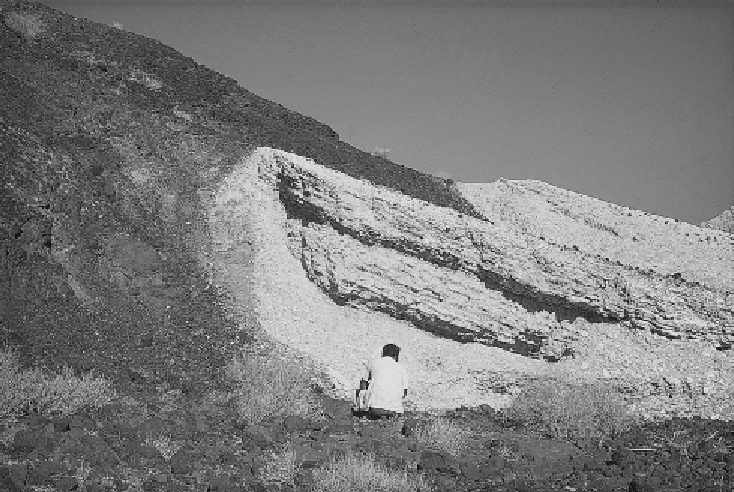Geoscience Reference
In-Depth Information
Figure 11.1. Pliocene lake sediments (diatomites) in fault contact with older volcanic
rocks, Afar Desert, Ethiopia. (Photo: Fran¸oise Gasse.)
linked to volcanic and tectonic activity (
Figure 11.1
) and those directly related to
climatic change. For example, the change from Pliocene lake sedimentation (
Figure
11.2
) in the Middle Awash Valley to a regime of river deposition in the Pleistocene
(
Chapter 10
,
Figure 10.1
) may well reflect tectonic breaching of the dam impounding
the lake rather than a change in climate (Williams et al.,
1986
). Equally, Pliocene Lake
Gadeb at 2,300 m elevation in the semi-arid uplands of Ethiopia came into being as
a result of lava flows damming the ancestral Webi Shebeli between 2.7 and 2.5 Ma
ago (Williams et al.,
1979
; Eberz et al.,
1988
). However, the diatomite sequence of
former Lake Gadeb reveals three major transgression-regression cycles, none related
to tectonic events, culminating in fragmentation of the original lake into a series of
shallow pools and swamps (Gasse,
1980
), and the pollen preserved within the lake
sediments indicates a cooler drier climate around 2.5Ma (Bonnefille,
1983
), consistent
with global trends (Williams et al.,
1998
).
Lakes have been widely used as indicators of previously wetter climates in areas
that are now arid. However, the mere presence of lake sediments in the heart of a
desert does not necessarily mean that the regional climate was once wetter in that
area. In extreme cases, which can be tested experimentally in the laboratory, deflation
in the lee of a small rocky hill can lead to exposure of the local water-table and a small
lake can form. Furthermore, if a lake receives its water from a distant, well-watered

